I’d say I’m firmly in the November-is-pumpkin-season camp, rather than the November-is-Christmas-time camp. But regardless of your own affiliation, I hope you will enjoy these pumpkin spice waffles with pumpkin brown butter. I recommend serving them with real maple syrup for the full flavor experience. It’ll be incredible in October, November, or whenever you need a little pumpkin indulgence.
Notes: The butter can be made up to several days ahead of time and kept in the fridge. To keep waffles warm and crisp while you finish cooking, place a baking tray in the center of your oven and heat to 200F. Transfer waffles from waffle iron onto the tray, and keep them warm until you’re ready to sit down and eat.
Waffles adapted from Smitten Kitchen. Butter adapted from Carolina Gelen.
Ingredients
Makes 20 mini waffles (pictured) or about 8 regular ones.
For the pumpkin brown butter:
- 9 tbsp unsalted butter
- 2 tsp milk powder
- 1/2 cup canned pumpkin (you need a single 15oz can between the butter and the waffles)
- 1/2 tsp salt
- 1 teaspoons ground cinnamon
- 1/4 teaspoon ground nutmeg
- 1/4 teaspoon ground ginger
- pinch of ground cloves
- 1/4 cup light brown sugar
- 1/2 teaspoon vanilla extract
- 2 tbsp buttermilk (or any dairy milk)
For the pumpkin spice waffles:
- 2 cups all-purpose flour
- 1/4 cup packed light brown sugar
- 1 1/2 teaspoons baking powder
- 3/4 teaspoon baking soda
- 1/4 teaspoon salt
- 1 1/2 teaspoons ground cinnamon
- 3/4 teaspoon ground ginger
- 1/8 teaspoon ground cloves
- 3 large eggs
- 1 1/2 cups well-shaken buttermilk
- 1 cup canned pumpkin (you need a single 15oz can between the butter and the waffles)
- 3 tablespoons unsalted butter
- Vegetable oil for brushing waffle iron or cooking spray
To make the butter:
Measure out 1 cup of pumpkin and set aside for the waffles. Keep what remains close to the stove for the butter.
In a small saucepan, heat the 9 tbsp of butter over medium heat until melted. Add the milk powder, and whisk it up right away so it doesn’t clump up. Continue cooking on medium until the butter browns to a light brown color. Remove from heat and immediately whisk in the remaining pumpkin, whisking vigorously until the mixture becomes smooth and silky. Turn the burner down to low and put the pot back on the heat heat, whisking more or less constantly until the steam from the pumpkin almost stops (you’ll notice it steams a lot at the beginning, and then less and less as you keep cooking), about 3 minutes.
Remove from heat and let cool to room temperature. This will go faster if you transfer the butter to a bowl. Whisk in the remaining ingredients until fully incorporated, and then refrigerate until ready to serve.
To make the waffles:
Whisk together the dry ingredients (flour, sugar, salt, baking power, baking soda, and spices) in a large mixing bowl. Separate the eggs, tossing the yolks into the dry ingredients, and putting the whites in a separate medium bowl. Beat the egg whites to medium peaks and set aside.
Melt the butter and preheat your waffle iron. Add the buttermilk, pumpkin, and butter to the dry ingredients and then whisk until mostly smooth (small lumps are just fine, but no dry patches of flour). Add half of the beaten egg whites to the mixture and fold in with a spatula. Add the remaining whites and fold in until mostly combined (a few streaks of white are fine to leave). Portion and cook the batter according to the manufacturer’s instructions for your waffle iron.
To serve:
Spread the pumpkin spice waffles with the pumpkin brown butter and drizzle liberally with maple syrup. Any leftover waffles, once they are fully cooled, will freeze quite well in an airtight bag or container. Just pop them in the toaster to reheat. Leftover butter is great on toast or pumpkin bread or pancakes…

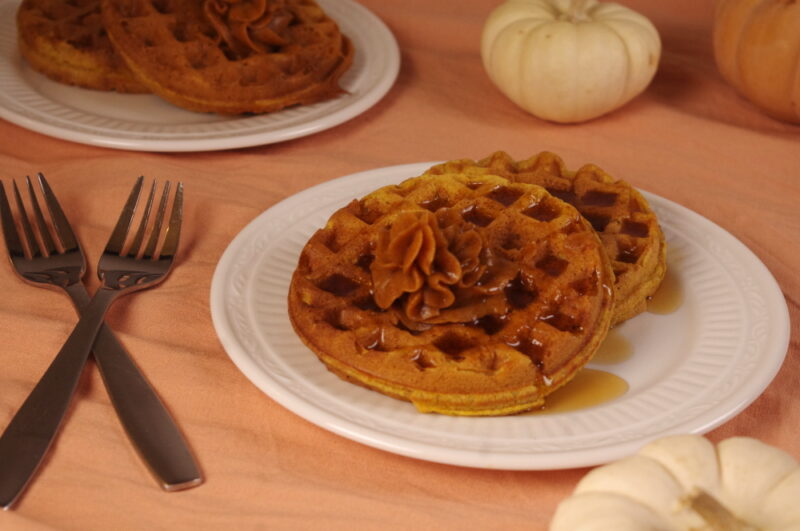

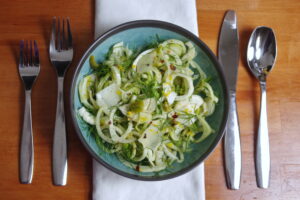




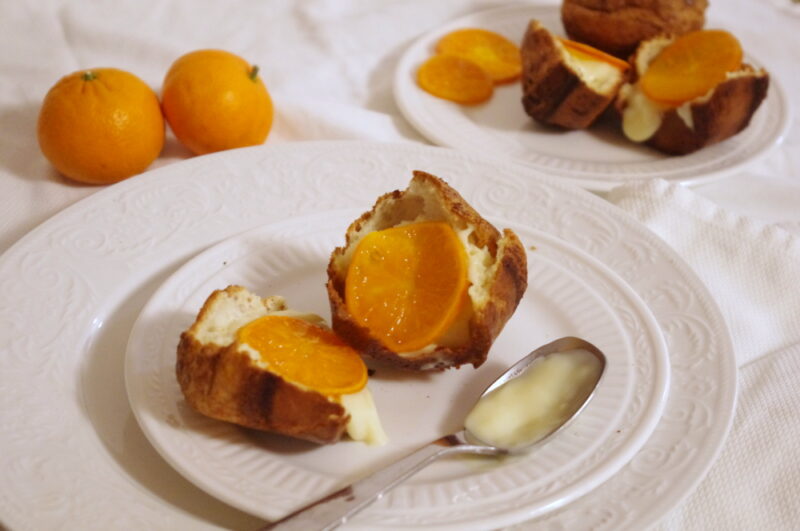
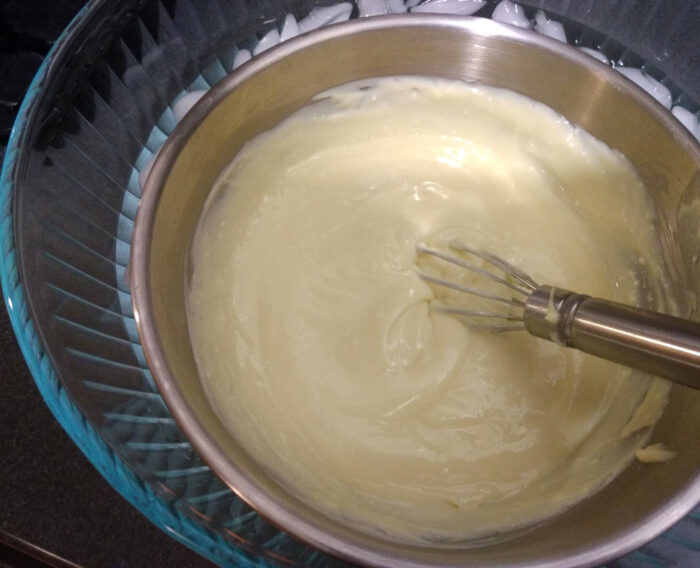




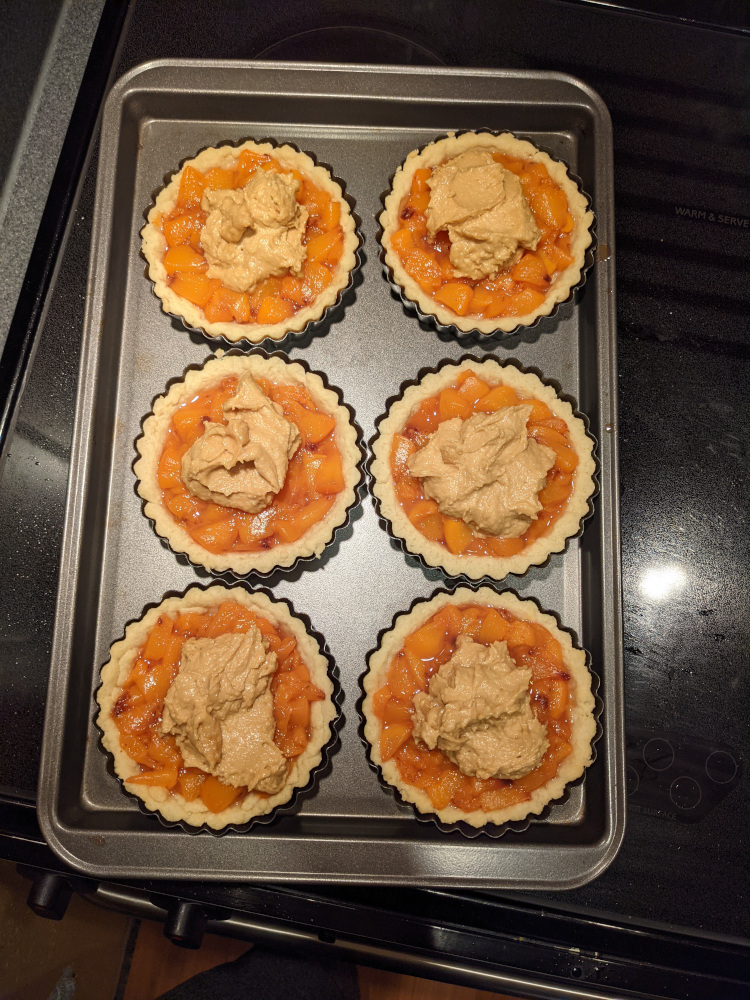



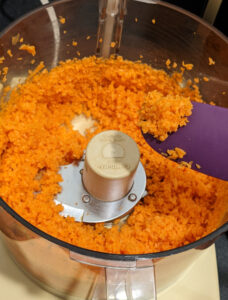 Wash the sweet potato and cut into chunks. No need to peel it. Put the chunks into the bowl of a food processor and pulse repeatedly until minced (think sweet potato meal, but not sweet potato puree!). Drain the dates and add them to the potato. Pulse a few times to help cool the dates down. Add the eggs, nut butter, and extracts and blend until smooth. Add all remaining ingredients, except chocolate chips, and pulse until well combined.
Wash the sweet potato and cut into chunks. No need to peel it. Put the chunks into the bowl of a food processor and pulse repeatedly until minced (think sweet potato meal, but not sweet potato puree!). Drain the dates and add them to the potato. Pulse a few times to help cool the dates down. Add the eggs, nut butter, and extracts and blend until smooth. Add all remaining ingredients, except chocolate chips, and pulse until well combined.